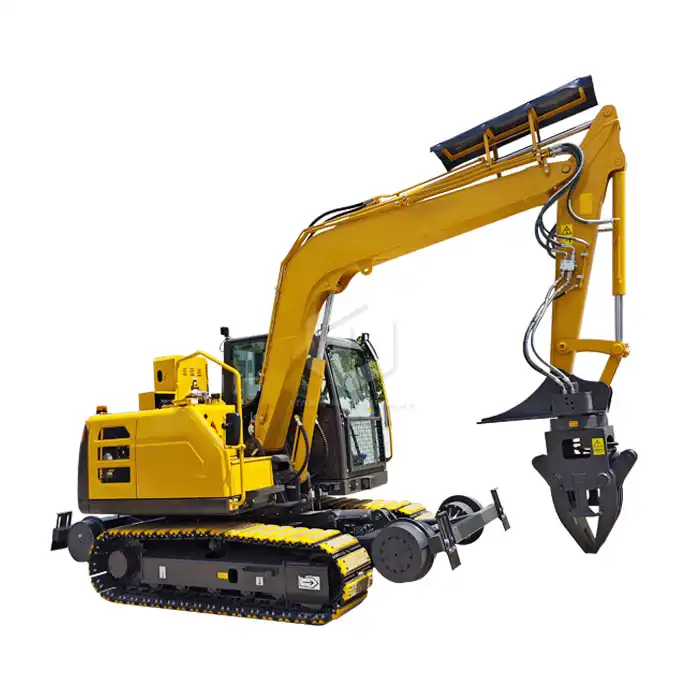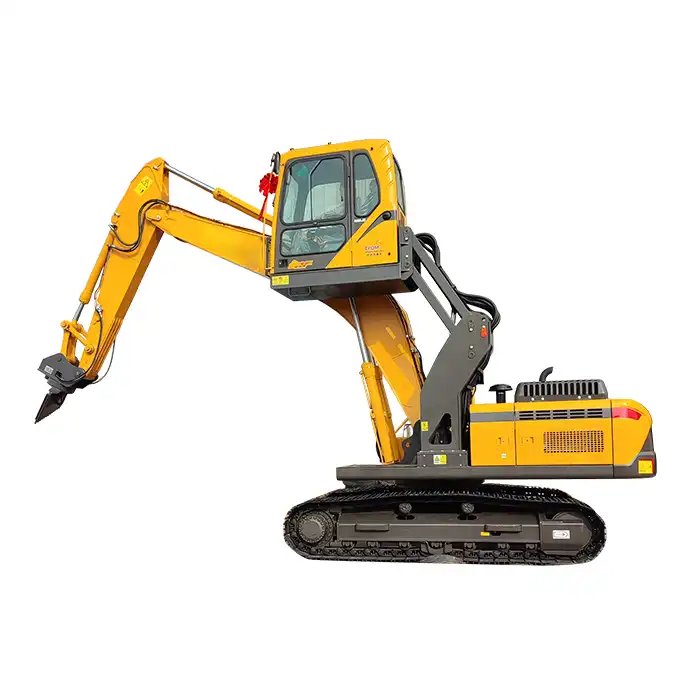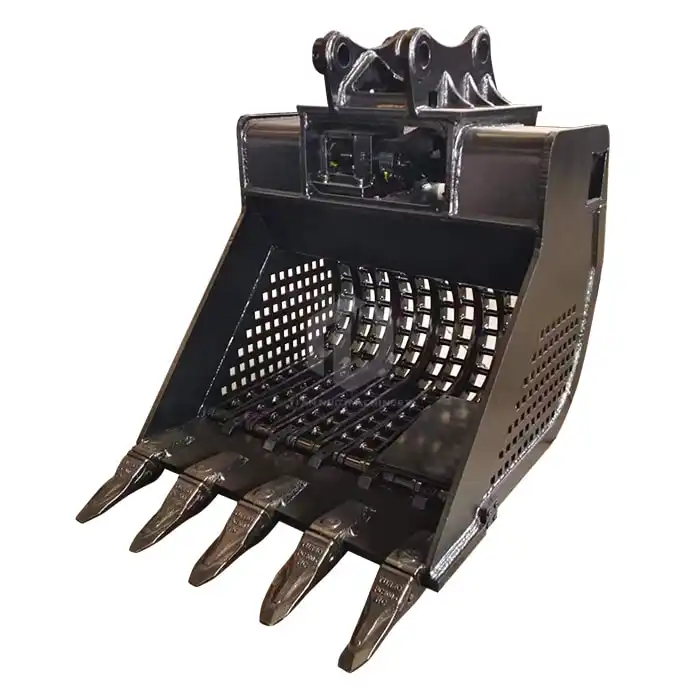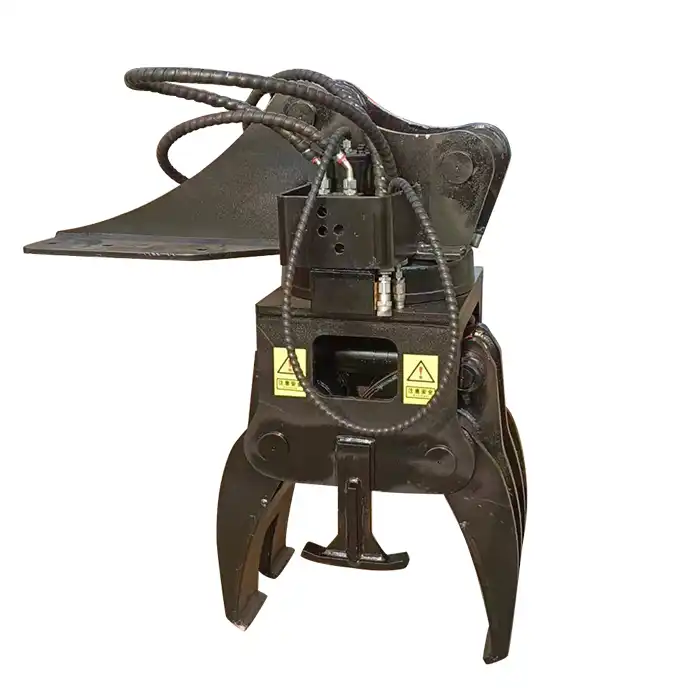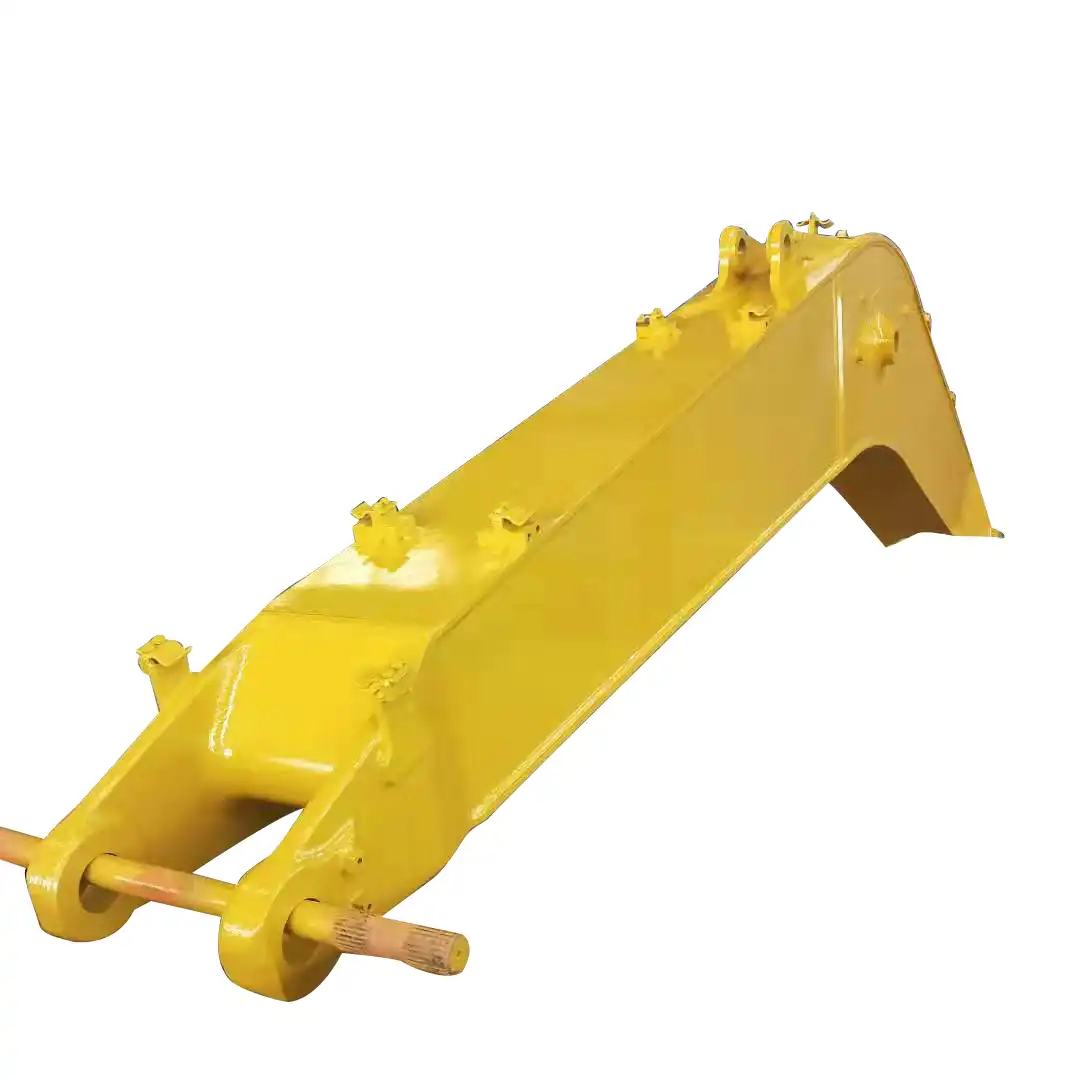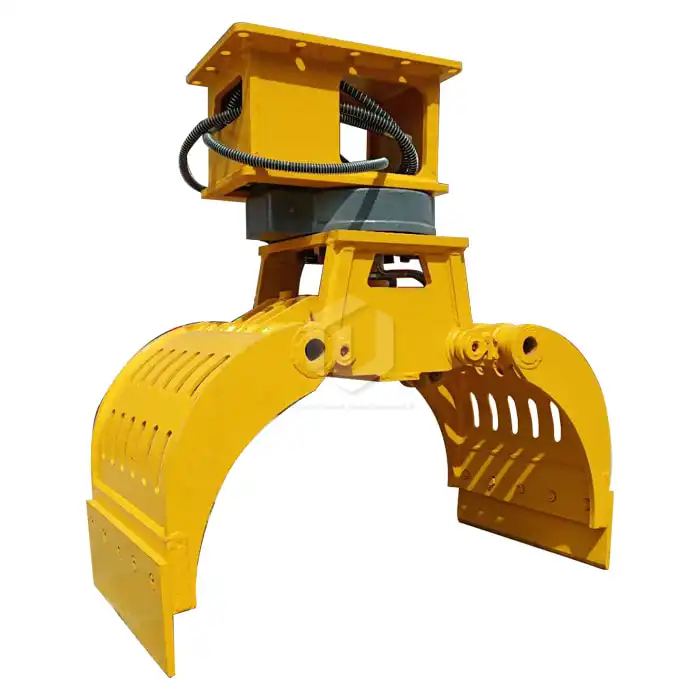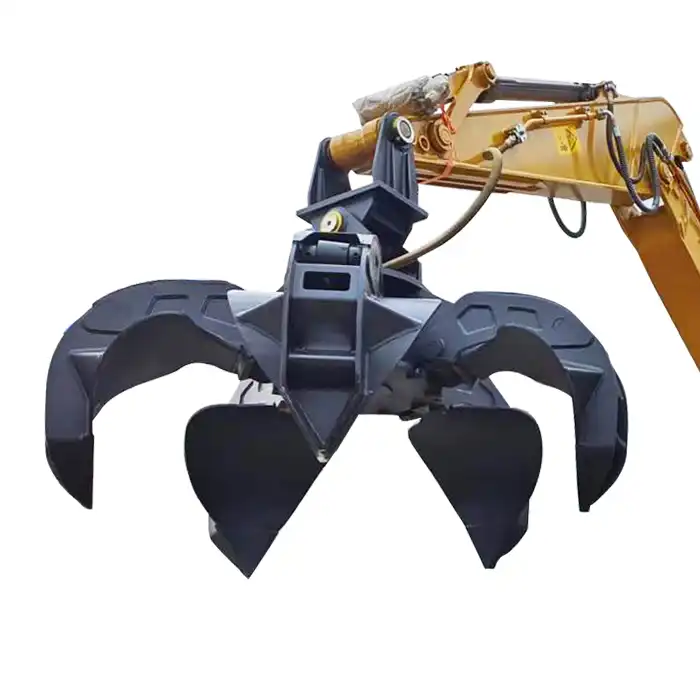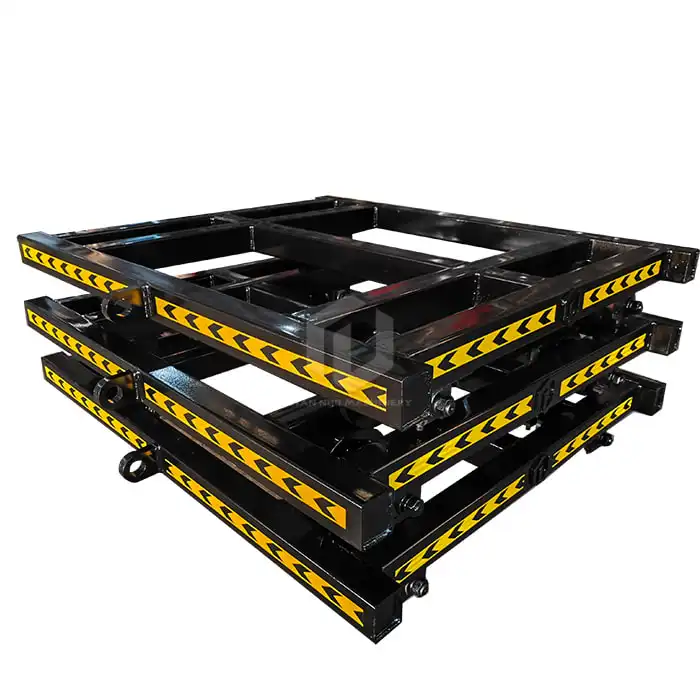What is the difference between a ditching and grading bucket?
When it comes to excavator attachments, two commonly used tools are ditching buckets and grading buckets. While they may seem similar at first glance, these attachments serve different purposes and have distinct features that set them apart. In this article, we'll explore the key differences between ditching and grading buckets, focusing on their shape and design, edge style, and primary purpose. We'll also introduce you to an innovative solution that combines the best of both worlds: the degree rotating hydraulic tilt ditching bucket.

Shape And Design
The shape and design of ditching and grading buckets are purpose-built to excel in their specific functions, ensuring efficiency, precision, and reliability in various excavation and grading tasks. These specialized buckets are engineered with unique profiles and features that differentiate them from standard excavator buckets, enabling optimal performance for their intended applications.
Ditching Buckets
Ditching buckets are characterized by their wider and shallower design compared to standard excavator buckets. Typically, they feature a curved or tapered profile, which facilitates smooth material movement and effective soil release. This design is particularly advantageous when excavating or maintaining ditches, trenches, channels, and slopes.
The wider width of ditching buckets allows operators to cover more ground in a single pass, significantly improving efficiency. By reducing the number of scooping cycles needed, operators can complete large-scale ditching and clearing tasks more quickly and with less fuel consumption. The shallow depth of these buckets plays an equally critical role, as it prevents excessive digging that could disrupt the desired grade or damage surrounding terrain. This shallow profile helps maintain a consistent depth and slope, ensuring precision when shaping ditches and trenches.
Grading Buckets
Grading buckets, on the other hand, are designed with a flat bottom and straight sides. This configuration makes them ideal for achieving smooth, level surfaces and performing precise grading, leveling, and backfilling work. The flat bottom ensures even distribution of material across the bucket, allowing operators to spread and level soil or aggregates with accuracy and consistency.
While grading buckets may be wider than standard buckets, they may not be as wide as ditching buckets. The slightly narrower width provides greater control, especially when working on fine grading tasks where precision is critical. The straight sides help maintain clean edges during operations, which is particularly beneficial for achieving uniform finishes in landscaping, roadwork, and foundation preparation.
The degree rotating hydraulic tilt ditching bucket combines elements of both designs, featuring a wide, shallow profile similar to a ditching bucket, but with the added ability to rotate and tilt. This versatility allows it to perform both ditching and grading tasks with greater efficiency and precision.
Edge Style
The edge style is a key design feature that further distinguishes ditching and grading buckets. The cutting edge plays a crucial role in determining the efficiency and effectiveness of the bucket, as it impacts the way material is handled and the overall finish of the work.
Ditching Buckets
Ditching buckets are commonly equipped with two main types of cutting edges: a smooth, straight cutting edge or a serrated edge. The choice between these two designs depends on the specific requirements of the excavation task at hand.
Smooth, Straight Cutting Edge: The smooth edge is ideal for tasks that require clean, uniform cuts, such as creating and maintaining ditches, channels, or trenches. This edge provides a smooth cutting action, ensuring that the material is neatly removed without disturbing the surrounding soil or terrain. It is particularly effective when the goal is to shape ditches with a consistent depth and slope, producing tidy, straight sides.
Serrated Edge: For more challenging environments, a serrated edge is often preferred. This style features jagged teeth that allow the bucket to cut through compacted soil, break up hard ground, or cut through roots and vegetation. The serrated design provides added cutting power, enabling the bucket to perform in tough conditions, such as rocky or overgrown areas where a smooth edge might struggle. This makes it ideal for clearing roots, stumps, or dense vegetation while also handling difficult soil conditions more effectively.
The ability to choose between these two edge styles allows ditching buckets to be versatile in various environments, providing the right tool for both precision ditching and more demanding excavation tasks.
Grading Buckets
Grading buckets, in contrast, typically feature a bolt-on cutting edge, a design that is optimized for creating smooth, level surfaces. The bolt-on edge is replaceable, which is a significant advantage for operators who need to maintain consistent performance over time. As the edge wears down due to prolonged use on rough terrain or abrasive materials, it can be easily swapped out for a new one, extending the life of the bucket and ensuring ongoing precision.
The bolt-on design also allows for a customizable cutting edge. Operators can select edges with different materials or hardness levels, depending on the type of work being performed. For example, a harder, more durable edge might be chosen for grading on rocky or abrasive surfaces, while a softer, more flexible edge may be used for finer grading tasks.
The bolt-on cutting edge of a grading bucket is particularly suited for precise leveling and smoothing tasks, such as preparing foundations, leveling soil for landscaping, or creating uniform surfaces in construction projects. The sharpness and straightness of the edge ensure that material is evenly distributed, providing a clean, crisp finish that is crucial in these applications.
The degree rotating hydraulic tilt ditching bucket often incorporates a versatile edge design that can be adapted to different tasks. Some models feature interchangeable edges, allowing operators to switch between smooth and serrated options depending on the job at hand. This flexibility makes it an invaluable tool for contractors who need to perform a variety of excavation and grading tasks.
Primary Purpose
As their names suggest, ditching and grading buckets have distinct primary purposes. Ditching buckets are specifically designed for creating, cleaning, and maintaining ditches, trenches, and channels. Their wide, shallow profile allows for efficient material removal and helps maintain consistent slopes. Ditching buckets are particularly useful in drainage projects, road construction, and landscaping applications where precise water flow control is essential.
Grading buckets, on the other hand, excel at creating smooth, level surfaces. They are ideal for final grading work, leveling uneven terrain, and spreading materials evenly across a site. Grading buckets are commonly used in construction projects, landscaping, and site preparation where achieving a uniform surface is crucial.
The degree rotating hydraulic tilt ditching bucket bridges the gap between these two specialized tools. Its rotating and tilting capabilities allow it to perform both ditching and grading tasks with remarkable efficiency. This versatility makes it an excellent choice for contractors who need to switch between different tasks quickly or work in confined spaces where maneuverability is limited.
The hydraulic tilt function enables operators to adjust the bucket's angle, providing greater control and precision when creating slopes or working on uneven terrain. The rotating feature allows for easy positioning of the bucket without moving the excavator, saving time and increasing productivity on the job site.
In conclusion, while ditching and grading buckets serve distinct purposes, the innovative degree rotating hydraulic tilt ditching bucket offers a versatile solution that combines the best features of both. By understanding the differences in shape, design, edge style, and primary purpose of these attachments, contractors can make informed decisions about which tools best suit their specific project needs.
Contact Information
As the construction and excavation industry continues to evolve, manufacturers like Shandong Tiannuo are at the forefront of developing advanced attachments that improve efficiency and versatility on job sites. Whether you're working on drainage projects, road construction, or general site preparation, choosing the right degree rotating hydraulic tilt ditching bucket can significantly impact your productivity and the quality of your work.
References:
1. Construction Equipment Guide. "Excavator Buckets: Choosing the Right One for the Job."
2. Caterpillar. "Cat® Buckets for Excavators."
3. Equipment World. "How to choose the right excavator bucket."

